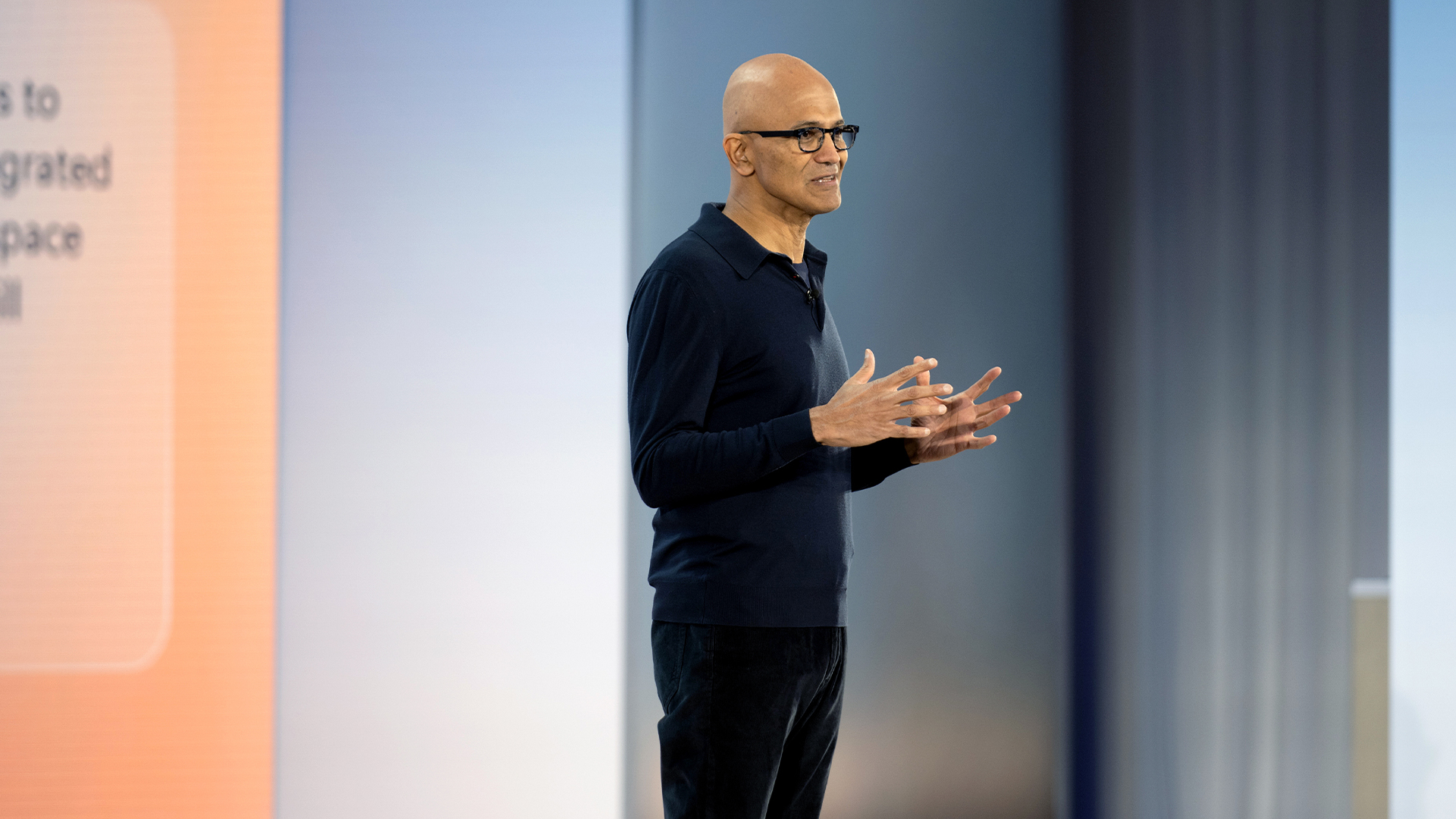AI is finally delivering bang for its buck, according to Microsoft
Is generative AI worth the cost? A new report argues companies make significant returns on every dollar spent


Generative AI offers a return on investment (ROI) of $3.70 for every dollar invested, according to a report commissioned by Microsoft from IDC.
The tech giant says that 85% of the Fortune 500 are using its own AI tools amid a wider boom in the technology.
But high costs for access to software and tools has raised concerns that this industry trend might pay for those developing the technology, rather than those using it, with previous research from Gartner suggesting it has become a "tax" on companies.
IDC surveyed 4,000 employees of enterprise organizations from around the world to unpick how people are using AI, how much it's paying, and what's next.
"IDC predicts that business spending to adopt AI, use AI in existing business operations, and to deliver better products/services to business and consumer customers will have a cumulative global economic impact of $19.9 trillion through 2030 and drive 3.5% of global GDP in 2030," the company said.
Use of generative AI increased from 55% of those surveyed in 2023 to 75% this year, IDC says, marking a steep rise in adoption rates.
"Enterprises worldwide are expected to invest $44 billion in GenAI solutions in 2024, significantly more than the $19 billion spent in 2023," the report says.
Get the ITPro daily newsletter
Sign up today and you will receive a free copy of our Future Focus 2025 report - the leading guidance on AI, cybersecurity and other IT challenges as per 700+ senior executives
And AI is finally starting to pay, the study noted. AI deployments take less than eight months to roll out, with a return on investment within 13 months.
The average return on investment for every dollar is $3.70, though it varies — the top tier users of AI are seeing a ROI of $10. The biggest ROI is productivity use cases for 43% of respondents.
The results echo those from Google Cloud earlier this year, which suggested generative AI should offer a return on investment within a year — however, other research from Logicalis has suggested many companies haven't seen ROI at all as yet.
Indeed, the boost to the bottom line depends greatly on how AI is used and the company itself, and ROI can be difficult to track, especially when it comes to employee productivity.
What's next?
While boosting productivity is the main way generative AI is being used to boost bottom lines at the moment, though IDC predicts it will shift to functional purposes and industry use cases such as product development and manufacturing in the next two years.
"Organizations are transitioning to a more strategic AI approach, aligning investments across applications, platforms, data, and infrastructure," IDC says in the report.
"The aim is to enhance the value of AI initiatives through advanced automation, greater model and data reuse, and efficient, cost-effective inference delivery from network to edge to the individual device."
IDC also found that while pre-build AI solutions dominate at the moment, with 43% of respondents saying it was their primary approach for taking advantage of AI, that looks to shift towards custom-built AI solutions within the next two years.
RELATED WHITEPAPER

Given the gains, why are companies still concerned about generative AI? The report said data security, data governance, privacy issues and regulatory compliance remained top concerns for organizations.
But another challenge holding back generative AI uptake is a lack of skilled workers, though that concern fell from 52% of respondents in 2023 to 45% this year.
Freelance journalist Nicole Kobie first started writing for ITPro in 2007, with bylines in New Scientist, Wired, PC Pro and many more.
Nicole the author of a book about the history of technology, The Long History of the Future.
-
 Geekom Mini IT13 Review
Geekom Mini IT13 ReviewReviews It may only be a mild update for the Mini IT13, but a more potent CPU has made a good mini PC just that little bit better
By Alun Taylor
-
 Why AI researchers are turning to nature for inspiration
Why AI researchers are turning to nature for inspirationIn-depth From ant colonies to neural networks, researchers are looking to nature to build more efficient, adaptable, and resilient systems
By David Howell
-
 Third time lucky? Microsoft finally begins roll-out of controversial Recall feature
Third time lucky? Microsoft finally begins roll-out of controversial Recall featureNews The Windows Recall feature has been plagued by setbacks and backlash from security professionals
By Emma Woollacott
-
 Microsoft launches new security AI agents to help overworked cyber professionals
Microsoft launches new security AI agents to help overworked cyber professionalsNews Microsoft is expanding its Security Copilot service with new AI agents to help overworked IT teams deal with surging security threats.
By Bobby Hellard
-
 ‘The entire forecasting business process changed’: Microsoft CEO Satya Nadella says Excel changed the game for enterprises in 1985 – he’s confident AI tools will do the same
‘The entire forecasting business process changed’: Microsoft CEO Satya Nadella says Excel changed the game for enterprises in 1985 – he’s confident AI tools will do the sameNews The Microsoft CEO says we need to change how we measure the value of AI
By George Fitzmaurice
-
 Microsoft exec touts benefits of AI productivity gains
Microsoft exec touts benefits of AI productivity gainsNews Microsoft CCO Judson Althoff said the company is unlocking significant efficiency gains from AI tools internally.
By George Fitzmaurice
-
 ‘We’ve created an entirely new state of matter’: Satya Nadella hails Microsoft’s 'Majorana' quantum chip breakthrough
‘We’ve created an entirely new state of matter’: Satya Nadella hails Microsoft’s 'Majorana' quantum chip breakthroughNews Microsoft has unveiled a new chip it says could deliver quantum computers with real-world applications in ‘years, not decades'.
By Emma Woollacott
-
 Microsoft says AI tools such as Copilot or ChatGPT are affecting critical thinking at work – staff using the technology encounter 'long-term reliance and diminished independent problem-solving'
Microsoft says AI tools such as Copilot or ChatGPT are affecting critical thinking at work – staff using the technology encounter 'long-term reliance and diminished independent problem-solving'News Research from Microsoft suggests that the increased use of AI tools at work could impact critical thinking among employees.
By Nicole Kobie
-
 The DeepSeek bombshell has been a wakeup call for US tech giants
The DeepSeek bombshell has been a wakeup call for US tech giantsOpinion Ross Kelly argues that the recent DeepSeek AI model launches will prompt a rethink on AI development among US tech giants.
By Ross Kelly
-
 OpenAI unveils its Operator agent to help users automate tasks – here's what you need to know
OpenAI unveils its Operator agent to help users automate tasks – here's what you need to knowNews OpenAI has made its long-awaited foray into the AI agents space
By Nicole Kobie